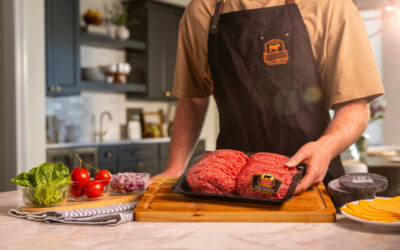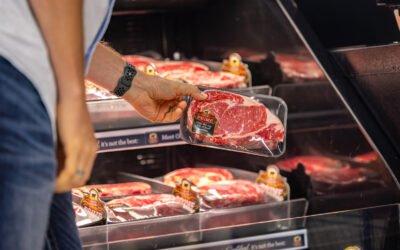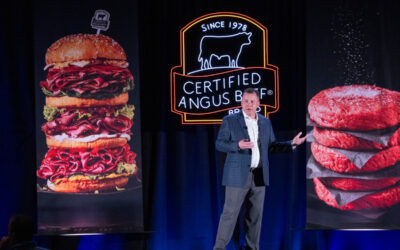
Uniform higher quality
Move toward consumer target boosts beef industry
by Miranda Reiman
Every auction barn study says the larger the group and the more uniform the cattle, the higher the premiums.
Work from Arkansas to North Dakota proves it’s true on individual lots, but what of that logic when it’s applied to the nation’s cowherd?
In a discussion on the merits of crossbreeding, Tom Troxel, University of Arkansas animal scientist,allowed, “A single-breed system would probably benefit the industry by improving uniformity of the herds, which could help marketability. It would remove that variability we created from the ’80s through the mid-’90s by participating in the sire breed-of-the-month club. Once the cowherd becomes more uniform, however, it is in a better position to realize the benefits of heterosis.”
It’s difficult to predict what more homozygosity would mean for the entire chain, but there are theories. As long as any move toward genetic sameness is focused on eating satisfaction, Missouri economist Scott Brown says it would be a boon.
“We continue to talk about the need to increase demand for beef,” he says. But what if the industry provides product so noticeably better that it shifts demand higher? “Then the possibilities are really very large.”
In the cattle cycle, the depth and length of a rebuilding phase depends on beef’s value equation. At these higher prices, the industry can’t afford to simply produce the same amount or more beef that disappoints.
“Providing consumers a product they are demanding is going to give producers a chance to expand the herd that otherwise wouldn’t have been there,” Brown said last fall. Increasing overall quality could improve beef demand by 10%, requiring 6 million more cattle.
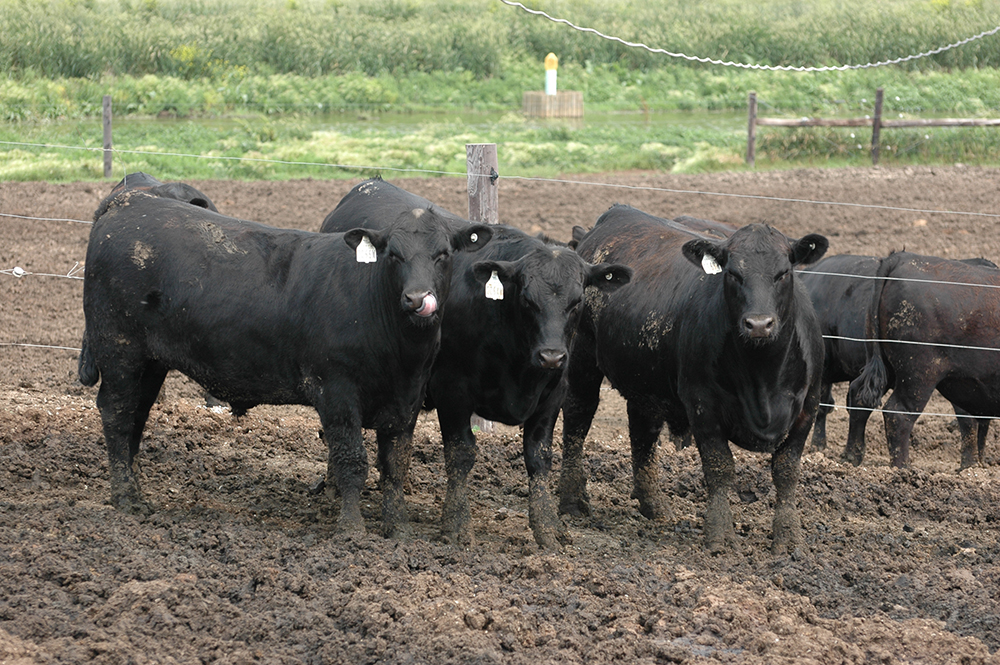
A key turn toward consumer focus came more than two decades ago when variability in the beef supply was rampant and demand had tanked. High-quality beef and a “brand-like initiative” emerged as the way to lure back consumers in 1990s.
“Industry economics began to change toward reflecting the entire value chain,” says animal scientist Nevil Speer, Western Kentucky University. “That favored production systems that were increasingly responsive to end-user specifications.”
One reaction, arguably, is that nearly 70% of the nation’s cowherd is Angus-based today.
“Back then, within every rancher’s set of five calves there was a $200 difference in value by the time they got to the end point,” recalls Vale, S.D., producer Rich Blair. “It was too much money to be giving away so we needed to figure out how to move our bottom end up to the top end.”
Selling cattle on a grid for the first time in 1998, Blair realized a $16 per-head premium. “I thought wow, this is great: I can actually get paid for better genetics.”
Packer buyers told him their grids were set up to communicate demand signals.
“So I sat down and looked at U.S. Premium Beef grids and thought, what target can I hit? It didn’t pay enough on yield grade 1 and 2 to make it worthwhile, and I didn’t want those genetics in my cowherd. What it was really paying me for was Prime and CAB. How can I hit that? I started looking at the Angus sire summary and breeding to see how far we can go with marbling.”
The four National Beef Quality Audits (NBQA) point to the progress made. From 1991 to the 2011 report, the share of Choice and Prime grading carcasses increased from 55% to 61%.
“The first several audits underscored the industry’s weaknesses with respect to its primary competitors and the urgent need to shore up product quality,” Speer says. “The primary concern revolved around mounting deficiencies regarding consistency, uniformity and predictability.”
Today those are included, but are no longer the sole focus.
“Isn’t that a great comment about the strides we’ve made in the beef industry with respect to our end-product and production over time?” he asks. “And clearly that coincides with genetic changes that have occurred in the industry.”
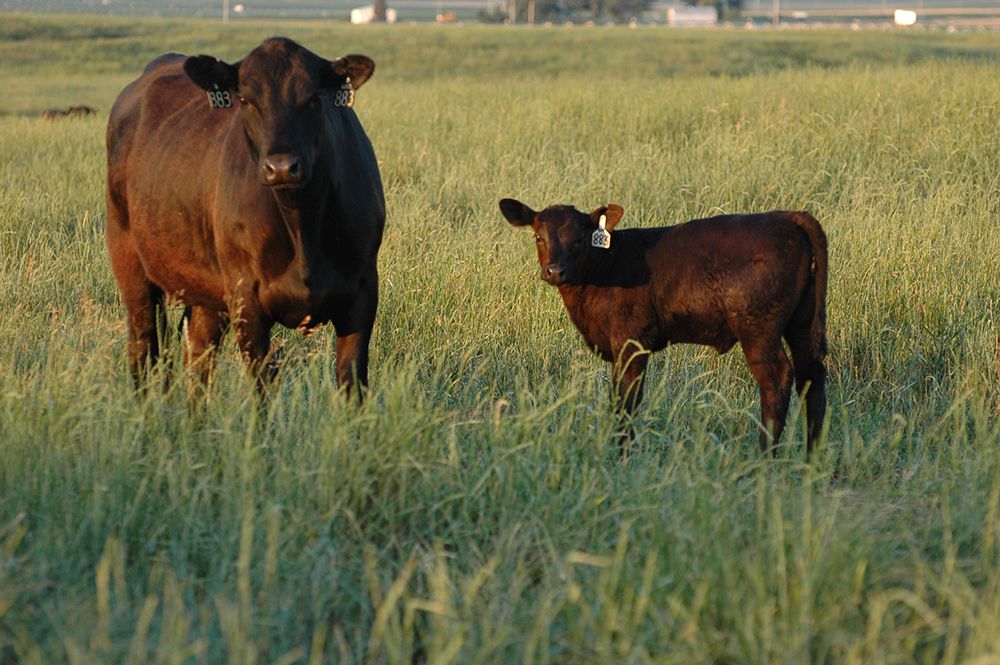
Yet, the recent audit still called for an additional 14 points of premium Choice and Prime.
Jay Riscky, national sales manager with Dallas-based Freedman Meats, says marbling is just one of the beef characteristics his customers depend on accessing with greater uniformity.
“When you open up a box, you have a five-, six-, seven-pound variance in loins,” he says. “If the end users are having to cut 16-ounce steaks out of all those loins, one guy is going to get a piece of paper on his plate, the other guy is going to get a nice big steak. At banquets, they have to cook those all at the same time, so one guy is going to get a well-done steak and the other guy is going to get a medium-done steak.”
That matters more now than ever.
“They just don’t want meat on the plate,” Riscky says. “When they are paying extraordinary amounts of money for beef right now they want eating experiences they don’t forget.”
Those memorable meals drive demand.
“Success breeds success. I don’t mind paying a premium for good cattle, because I make more money on cattle that grade Choice than I do Select,” says Art Wagner, procurement chief at National Beef Packing.“I want every animal that comes in through my doors to grade Choice and Prime.”
“It’s kind of a self-fulfilling process,” he says, noting that the more high-quality beef he sells, “the more money that the consumer is going to spend.”
Feeding like cattle makes a feeder’s job less complicated, says Warren White, of Mc 6 Feeders, near Hereford, Texas.
“It’s easier to market a set of cattle if they’re fairly consistent across the pen, because you’re feeding to the average of the group,” he says, noting the difference 20 years makes. “More people understand the importance of genetics, which is one part of that consistency.”
He suggests cattlemen use a better defined calving season and similar bloodlines across their herd.
“We lose some uniformity as we introduce heterozygosity and try to obtain heterosis. Typical crossbred populations are less uniform than straightbred populations,” Speer says. “From a systems perspective, there’s that tradeoff as we deal with indiscriminate crossbreeding. That’s where we have problems. We have situations where animals are certainly hitting the target and then we get a whole lot more animals that are outside of that.
“That becomes a cost to everybody because we have to somehow fix that or work with those,” he says. As beef business stakeholders contemplate the ideal genetic makeup and what that means to the whole, the NBQA serves as the guide in stating: “The fundamental efforts of the beef industry must focus on protecting, defending and continuously improving eating satisfaction and product integrity.”
You may also like
Success, Despite Challenges
Today’s market is complex and competitive. The collective effort of stakeholders across the supply chain positions Certified Angus Beef to meet the record demand for premium beef moving forward. Signals across the beef industry are clear and Angus farmers and ranchers seeking high-quality genetics that deliver premium beef are producing a product in high demand.
CAB Sets Sales Records, Sees Historically High Brand Acceptance Rates
In an otherwise tough time in the beef business, sales and supply records have been a bright spot. The positive numbers mean that quality beef production has not let up, and beef demand is holding. Consumers have proven the value proposition: the good stuff is worth a little more money, for a better eating experience.
Making Sense of Supply, Pricing and Navigating the Market
Amid anticipated shifts in cattle supply and evolving market dynamics, CAB remains well-positioned to navigate the beef sales road ahead. Clint Walenciak addressed how producer profitability, strategic specification adjustments, and resilient demand will help stabilize the brand’s beef supply chain through herd size and pricing shifts in 2025 and beyond.

